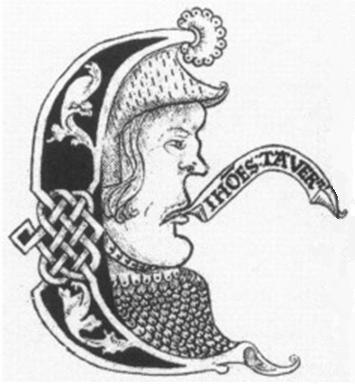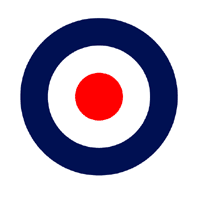One
great england music movement began in the late Medieval and early Renaissance
eras. There was a religious music tendency during this
period and the following ones, but it increased especially in the 16th century due
to the protestant reformation, which forced local musicians and composers to
create diferent styles for worship, nationalism, etc.
Some representatives from the late Medieval and early Renaissance are:
Leonel Power (1375-1445) was an English composer. He was one of the major figures in English music
in the early 15th century. He was a member and instructor to the choristers of
the household chapel of Thomas
of Lancaster, 1st Duke of Clarence. He later joined
the fraternity of Christ Church, Canterbury, and became master of the
choristers. He was the composer best-represented and a major contributor of the
“Old Hall” manuscripts.
John Dunstaple or Dunstable
(1390-1453)
He was one of the famous English composers of polyphonic music active in the early 15th century.
He was very influential, not only in England but on the Europe continent, particularly in the developing style of the Burgundian School.
John Taverner
(1490-1545)
He
was an English composer and organist, considered as the most important of his era.
Almost all
his music is vocal, and includes masses, magnificats and motets. The magnitude of his work is thought to date from the
1520s.
His best-known
motet is "Dum Transisset Sabbatum".
Later, the Elizabethan Golden Age was marked by the emergence of the anthem, the madrigal, the masque, the Ayre and opera with the work of important composers such as John Dowland (1563-1626), Thomas Campion (1567-1620), John Farmer (1570-1601), Orlando Gibbons (1583-1625), Robert Johnson (1583-1634),Thomas Tallis (1505-1585) and William Byrd (1543-1623). Most of the musicians were in great demand at Court, country houses, local festivals and of course, in churches.
The Baroque era (1600 to 1750 approx.) was characterised by formalised orchestral classical
music and saw the creation of functional tonality. Composers and performers
used more elaborate musical ornamentation. They made changes in musical
notation and developed new instrumental techniques, turning this style into
something more dramatic and complex. In this period, opera was established as
a musical genre.
In the 1800’s, music began to evolve with the Industrial Revolution. Technological change made new instruments available and led to the development of brass bands (musical ensemble consisting entirely of brass instruments, often with a percussion section) were introduced and used to convey the typical classical styles of music in a more fun and modern way. In the British tradition, these bands are composed of 28 players (including percussion). New types of music were also created, including the Music hall, which was originally tavern rooms which provided entertainment, in the form of music and speciality acts. The musical forms most associated with this evolved in part from traditional folk song and songs written for popular drama, becoming by the 1850s a distinct musical style. A music hall song usually consists of a series of verses sung by the performer alone, and a repeated chorus which carries the principal melody, and in which the audience is encouraged to join.
ENGLAND MAIN MOVEMENTS DURING 20TH CENTURY
Mod movement
Mod
(from “modernist” which was a term used in the 50’s to describe
modern jazz musicians and fans) was a subcultural
and music movement originated in London, England, in the late 50’s and peaked
in the early-to-mid 60’s. Significant elements of the mod generation include
fashion, music, including African
American soul, Jamaican ska,
British beat music, and R&B; and motor scooters as their main of transportation, such
as the famous italian Vespa and Lambretta.
Mods were upper-working or middle-class people who gathered at all-night clubs such as The Roaring Twenties, The Scene, La Discothèque, The Flamingo and The Marquee in London to hear the latest records and to show off their italian and french style clothing and dance moves.
Mods were also
associated with amphetamines use for estimulation and alertness instead of
getting intoxicated by other drugs and alcohol. They generally bought a combined
amphetamine/barbiturate called Drinamyl, which was known as "purple hearts" from dealers at clubs.
In regard to music, we
found The Rolling Stones, The Yardbirds and The
Kinks all had a following among mods, but many bands also emerged
such as The Small Faces, The Creation, The
Action, The
Smoke, John's
Children and most successfully The
Who.
By the summer of 1966,
the mod scene declined abruptly. As psychedelic rock and the hippie subculture grew more popular in the United Kingdom, many
people become estranged from the mod scene. Actually, The Who and Small
Faces changed their musical styles and no longer
considered themselves mods.
British
invasion movement
British
invasion movement was music movement that occurred in the mid 60’s when rock’n’roll music bands from the United Kingdom whose popularity spread
rapidly to the United States. All these groups were undoubtedly able to
elaborate easy and catchy songs owed to
the great american rock’n’roll, blues and R&B influences.
The Beatles were the band that marked the start of the British Invasion. Their arrival in the USA and subsequent appearance on The ED Sullivan Show generated great commotion in the American population. This event opened the american music market to many other important british bands that literally invaded the country, including The Rolling Stones, The Animals, The Who, The Kinks, The Yardbirds, The Hollies, The Honeycombs, The Dave Clark Five, etc.
The Beatles were the band that marked the start of the British Invasion. Their arrival in the USA and subsequent appearance on The ED Sullivan Show generated great commotion in the American population. This event opened the american music market to many other important british bands that literally invaded the country, including The Rolling Stones, The Animals, The Who, The Kinks, The Yardbirds, The Hollies, The Honeycombs, The Dave Clark Five, etc.
Sample of the single "I want to hold your hand" (1964) which secured the band's international success when it achieved enormous US popularity.
Madchester and Brit-pop generations
The pre-madchester music scene had been dominated by bands such as The
Smiths, New Order, The Fall and James. Later, these bands were to become a
significant influence
on the Madchester movement.
Madchester
movement is refered to the music scene developed in Manchester, England, towards the end of
the 80’s and into the early 90’s. Some artists associated with
the scene are New Order, The Happy Mondays, The Stone Roses, Inspiral Carpets, Northside, 808 State, James, The Charlatans, The Fall, A Guy Called Gerald, and other bands who mixed styles such alternative rock, psychedelic rock and dance music to create a sound which led to commercial success in the indie rock field and a wider musical influence nationally.
The Haçienda nightclub was very influential in the development of popular culture in Manchester because it was a major catalyst for the distinctive musical ethos in the city.
A few years later, in the early mid of the 90’s emerged from the British independent music scene a subgenre of alternative rock known as Brit-pop. The movement was influenced by British pop music of the 60’s and 70’s. Some famous groups such as Suede and Blur were the front bands, which soon were joined by others including Oasis, Pulp, Supergrass, Sleeper, Elastica, Radiohead and The Verve. Post-Britpop bands were Coldplay, Stereophonics and Travis.
The Rise and The Fall of Brit-pop
For more information, visit the next websites:
http://www.woodlands-junior.kent.sch.uk/customs/questions/music.htm
http://www.england.org.za/england-music.php
Aditional references:
"A History of Music in England" by Ernest Walker 3rd. Rev. 1952






No hay comentarios:
Publicar un comentario